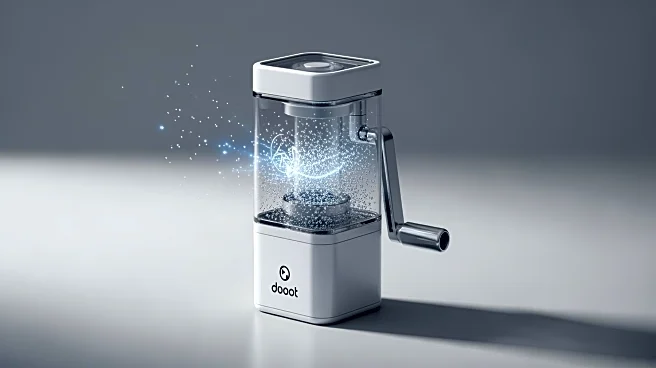What's Happening?
A new hand-powered device utilizing nanoparticles has been developed to disinfect drinking water, achieving a 99.9999 percent reduction in Vibrio cholerae within one minute. The device, created by Xu Deng
and colleagues at the University of Electronic Science and Technology of China, uses spherical silica nanoparticles coated with amine group chemicals and gold nanoparticles to create an electric charge in water. This charge leads to the formation of reactive oxygen species, which punch holes in microbial membranes, effectively killing pathogens. The device is designed for use in remote areas without electricity, providing a quick and efficient method for water purification.
Why It's Important?
Access to clean drinking water is a significant challenge in many remote and disaster-stricken areas. Traditional water purification methods often require electricity or sunlight, which are not always available. This new device offers a practical solution by allowing manual operation to achieve rapid disinfection. The technology could significantly improve public health outcomes by reducing the incidence of waterborne diseases such as cholera, especially in regions with limited infrastructure. The low cost of materials, primarily silica powder and plastic housing, makes it an economically viable option for widespread deployment.
What's Next?
The device is currently in the proof-of-concept phase, and further testing is needed to determine its capacity for disinfecting larger volumes of water. Researchers are optimistic about its potential for reuse, as the nanoparticles can be recovered and reused after each cycle. The next steps involve scaling up production and conducting field trials to assess its effectiveness in real-world conditions. If successful, this technology could be adopted by humanitarian organizations and governments to improve water safety in vulnerable communities.
Beyond the Headlines
The development of this device highlights the innovative application of nanotechnology in addressing global health challenges. It also raises questions about the environmental impact of nanoparticle use and the need for regulations to ensure safe deployment. Additionally, the device's ability to function without electricity could inspire further innovations in off-grid solutions for other essential services.











